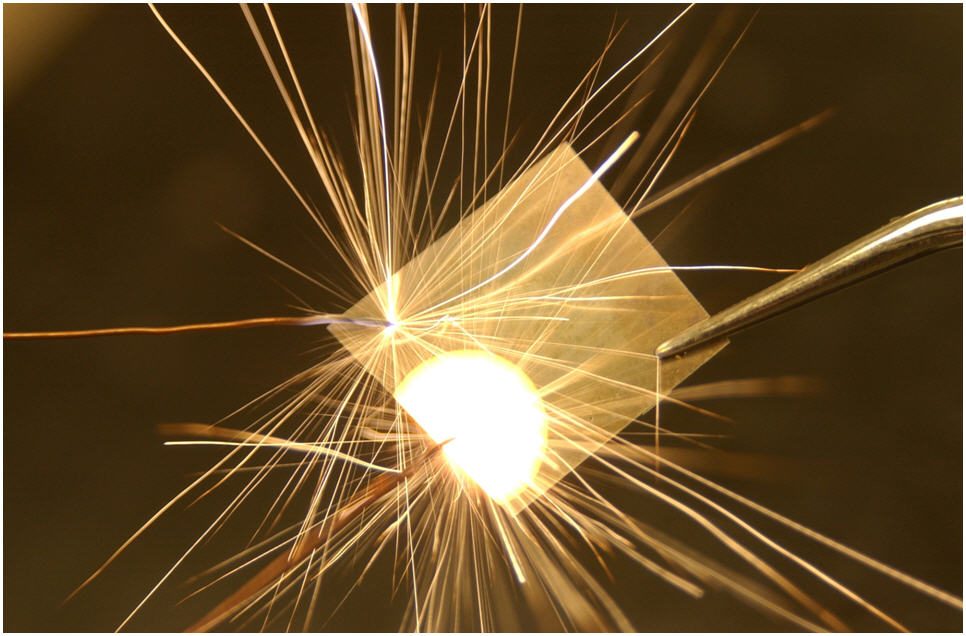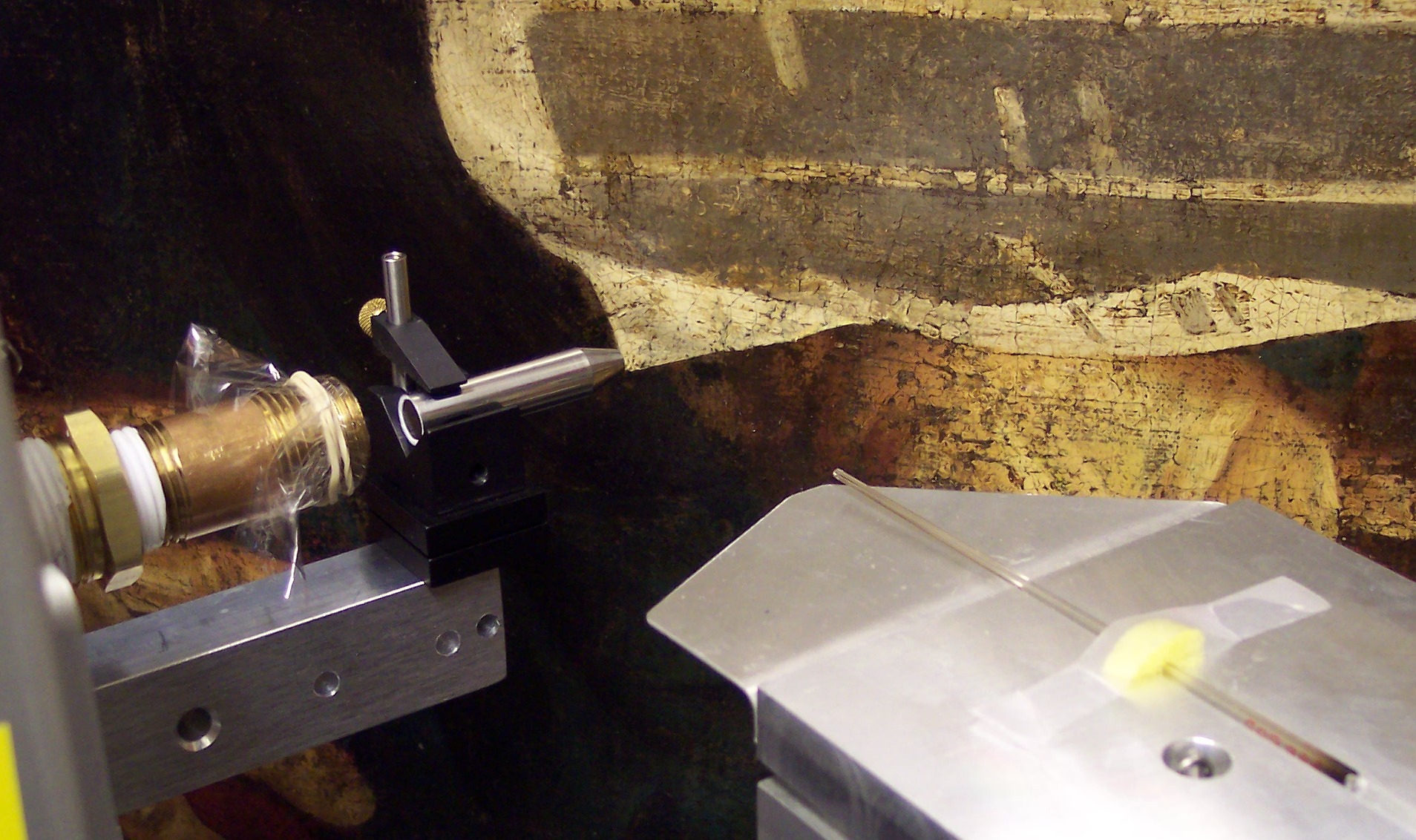X-RAY RUNS: Apply for Beamtime
2017 Nov 1 - Dec 21
2018 Feb 7 - Apr 3
2018 Proposal/BTR deadline: 12/1/17
2018 Apr 11 - Jun 4
2018 Proposal/BTR deadline: 2/1/18
Contact: E. Fontes (ef11@cornell.edu)

A thin foil multilayer,
with alternating aluminum and nickel layers, releases
heat and light as the layers react to form a metallic
compound. At CHESS A2 station small x-ray beams
focused by a tapered glass capillary records the
structure of the compound as the reaction front moves
across the foil. [Photograph by: Maximilian
Franz courtesy of Reactive Nano Technologies (RNT).
From the Hufnagel and Weihs groups at John Hopkins
University]
Ithaca, NY -- 30 students, faculty, postdocs and CHESS scientists shared dinner and three presentations at the fourth G-line Student Symposium convened at Wilson Laboratory on September 19th. The symposium is held twice each year to highlight work by Cornell graduate students who perform x-ray science programs at the Cornell High Energy Synchrotron Source (CHESS). The three G-line experimental stations they use – G1, G2 and G3 - are maintained and run by the graduate students themselves. Given so much responsibility the students, in addition to doing unique x-ray science, also learn how to design and build the research instruments they need. This is a rare educational opportunity not commonly found at other national synchrotron lightsource facilities.
Arthur Woll, the G-line staff scientist, organized the meeting and introduced the speakers. The first speaker was Gökhan Arikan, a student with Joel Brock, professor of Applied and Engineering Physics. His presentation covered “Time-resolved X-ray Studies of the Energetic Mechanisms Operant During Pulsed Laser Deposition of SrTiO3”. His motivation was to understand oxide and magnetic devices where the structure of interfaces often determines the properties of a device. Using the in-situ pulsed-laser deposition system at G3, he observed layer-by-layer growth while monitoring the substrate crystal truncation rod, and could distinguish the surface morphology and growth modes as a function of deposition rate.
Sterling Cornaby, studying under Don Bilderback, the associate director of CHESS, spoke on “Testing Single-Bounce Monocapillary X-ray Optics at G-line.” After giving an overview of capillary optics and the new glass drawing tower, he described how, during the last CHESS run, glass capillary optics were used simultaneously on three independent x-ray stations. One of the many new features of the puller is an optical micrometer that automates measuring the exact shape of the glass tubes after the draw. He described a LabView program that automates the drawing process, and how the divergence and spot size of each optic are tailored to match the requirements of each application. Recent optics have featured spot sizes up to 50 microns, and as low as 5 microns in diameter. The quality of the optics are well matched to the x-ray source sizes experienced at CHESS.

Shown at right is a tapered glass capillary optic used
to focus x-ray beams down to 10 microns or so in size.
The input end is stained brown by long-term x-ray damage
to the glass. This optic was fabricated by graduate
student Sterling Cornaby and is pictured in use to focus
a small x-ray beam onto an oil painting. Confocal x-ray
fluorescence mapping is used to examine buried paint
layers.
Post Doctoral fellow Xiangyun Qiu, working in the Pollack group in Applied and Engineering Physics, discussed their recent publication “Measuring the Force Between DNAs in Solution” [Physical Review Letters 96, 138101 (2006)]. Xiangyun talked about solution scattering from well-defined DNA molecules, and how x-ray data yield a quantitative measure of the inter-DNA potentials. Being acids, DNA molecules in solution are highly charged and repel one another. As salt is added to the solution, the repulsive forces are screened and the molecules interact more. The Pollack group used small-angle x-ray scattering (SAXS) to probe thermodynamic information and measure the size and shape of molecules. Numerical predictions of electric field isosurface models agree well with their x-ray measurements.
The audience was actively engaged during the
presentations with discussions about existing G-line
capabilities, experimental techniques and needed
improvements. As in the past, this symposium proved to
be a valuable educational exercise, with the audience
sated by both pizza and an excellent discourse in science.
Also see:
Complete article here (pdf)
online: 10/10/2006
